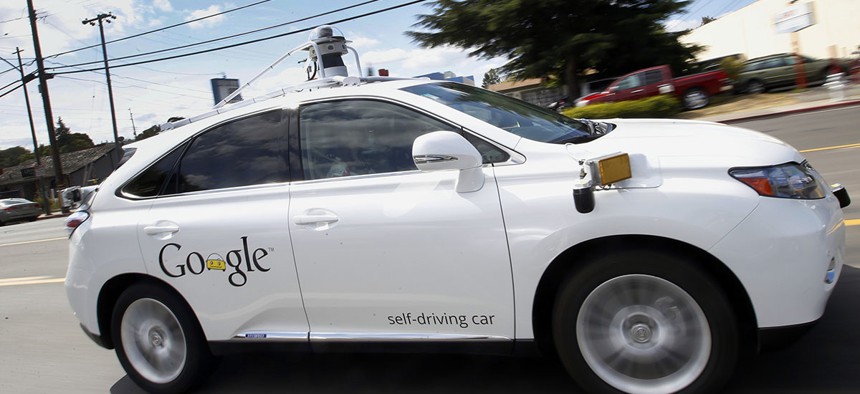The World of Self-Driving Cars Is Set to Change in April

Google's self-driving Lexus car drives along street during a demonstration at Google campus in Mountain View, California. Tony Avelar/AP
Get used to seeing cars driving with nobody behind the wheel.
If you live in California, you’re going to have to get used to cars driving with nobody behind the wheel.
The California DMV got approval Monday for its plan to put self-driving cars on the road with no safety driver, a measure that ensured a human could take over if the car’s artificial intelligence made a mistake. That means starting April 2, Google, Ford, Nvidia, and other companies can own and operate cars driving around the Golden State without anybody inside.
There are two permits, one for testing and another for commercial use, though the commercial use permit is geared towards companies offering services to the public, like autonomous taxis or delivery. Under the rules, a company would have to have a human remotely monitoring every car’s driving at all times, making it costly to operate autonomous cars on a large scale.
While California has been a haven for companies testing self-driving cars with a human behind the wheel, it’s been facing stiff competition from its neighbor Arizona, which doesn’t allow human-free driving except for universities according to a governor’s order, but has fewer transparency measures in place. Companies such as Uber have been testing their cars in Arizona, after facing regulatory backlash for testing self-driving cars in California without a permit.
While other states and countries have avoided the situation by just not regulating companies, California is the first to address the technology head-on and create a framework with oversight and accountability.
The permit to put cars on the road without a safety driver will mean a new safety threshold for companies to pass, according to the Sacramento Bee. As well has having human monitoring from a remote location, companies will need to prove that the cars can obey traffic laws. The new law also includes provisions for allowing police to deactivate the car and communicate with the company that owns the vehicle.
If companies can prove their driverless cars are truly safe, including measures to prevent cyberattack, California will grant another permit allowing commercial use of the vehicles.
These kinds of regulations are accelerating as the technology progresses. Since 2012, 21 states have passed legislation governing self-driving vehicles, and 33 states introduced legislation to be considered in 2017 alone, according to the National Conference of State Legislatures. But for now, the only place in the US that you’ll see a commercial vehicle legally whizzing by without a single human inside is California.
NEXT STORY: Google Assistant To Learn Dozens of Languages





